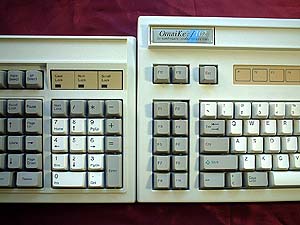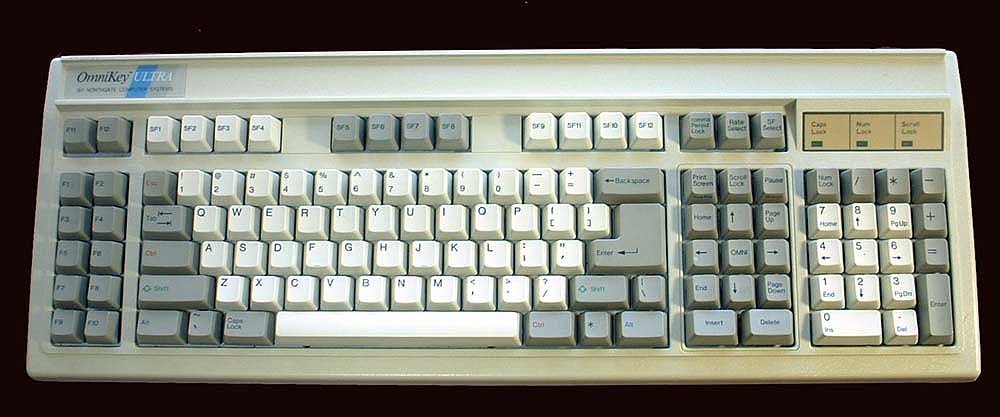

In the wee early days of digital photography, getting pictures from camera to computer was a major challenge. And now there are entire Web sites, or major parts of them, devoted to downloading software. Though he trademarked the word "freeware" for his creation, "shareware" soon became the accepted term for this business model.
#Omnikey ultra Pc#
When its author, who just so happened to be Andrew Fluegelman, the founding editor of PC World, decided to release his creation to the world, he simply requested that if people liked it, they send him a little cash.
#Omnikey ultra software#
But the program was better known for a different reason: It's widely credited for helping to create the shareware model of software distribution. PC-Talk was a terminal program that let you dial into bulletin board systems and early online services such as CompuServe. Its direct descendant, Roxio Easy Media Creator 9, does much more than CD burning, of course, but many of us still look fondly on the original. Easy CD Creator took a lot of the guesswork out of CD burning, and was pretty much the standard for CD writing until Windows XP came along.
#Omnikey ultra trial#
Optical disc burning is something we take for granted now (just drag files to the DVD-R and go), but in the early days of writeable CDs, burning a disc meant using third-party software and a lot of trial and error. While development of Red Hat was discontinued in 2003, it directly spawned successors like Ubuntu, which aim to make desktop use of Linux commonplace. Red Hat was critically important for beginning the move (however tentative) toward making Linux beginner-friendly and easier to install. Literally hundreds have existed over the years, though only a few have advanced the state of the art. Picking a watershed Linux distribution is tough. The Rebel line is still a mainstay for Canon, with its EOS Digital Rebel Xti a popular choice for serious photographers. The Rebel may also be the most-hacked camera ever made: Clever tweakers have created new firmware for the camera and even written DOS apps for it. The EOS was a 6.3-megapixel digital SLR that broke the $1000 price point, finally putting swappable lenses and greater photographic control within financial reach of serious shutterbugs disappointed with the performance of pocket digicams.

With the 2003 launch of the Digital Rebel, Canon brought high-end camera technology to regular consumers. After a disappointing 1991 release, the company was bought by Symantec and was eventually dismantled, as Norton SystemWorks continued what PC Tools had started. Central Point's PC Tools wasn't exactly revolutionary, but by bundling into a single package over a dozen useful utilities (antivirus, backup, undelete, and unformat(!), to name a few), it provided frustrated tech-savvy users with a one-stop shop for fixing problems on their DOS machines. Purchasing PC utilities one by one has always been costly, not to mention a pain in the neck. Exactly how popular was the MX-80? Despite its being 27 years old, you can still buy printer ribbons for it. Reasonably cheap, relatively durable, and fast enough (about 1 page per minute), the MX-80 became the best-selling dot-matrix printer after it was released, with Epson claiming that it had captured 60 percent of the dot matrix market. (Some of HyperCard's design features live on in browsers to this day, such as the use of a tiny pointing-hand cursor to indicate hyperlinks.) Side note: The game Myst was originally built with Hypercard.Īside from the sound of a successfully connected modem, has there ever been a noise in all of computerdom as satisfying as the chugga-chugga-crunch-buzz of a dot matrix printer? Dot matrix ruled the printing universe for years, sucking up tractor-fed paper with abandon.
#Omnikey ultra Offline#
And most important, you could link the cards together, sort of like an offline version of a Web site-years before the Web existed. But here goes: HyperCard-which was created by Apple software genius Bill Atkinson-was a programming environment that provided you with a stack of blank "cards," upon which you could add text, graphics, and little videos.

Trying to explain HyperCard to someone who's never used it is a bit like explaining a thesaurus to a three-year-old. Untitled Document The 50 Best Tech Products of All Time


 0 kommentar(er)
0 kommentar(er)
